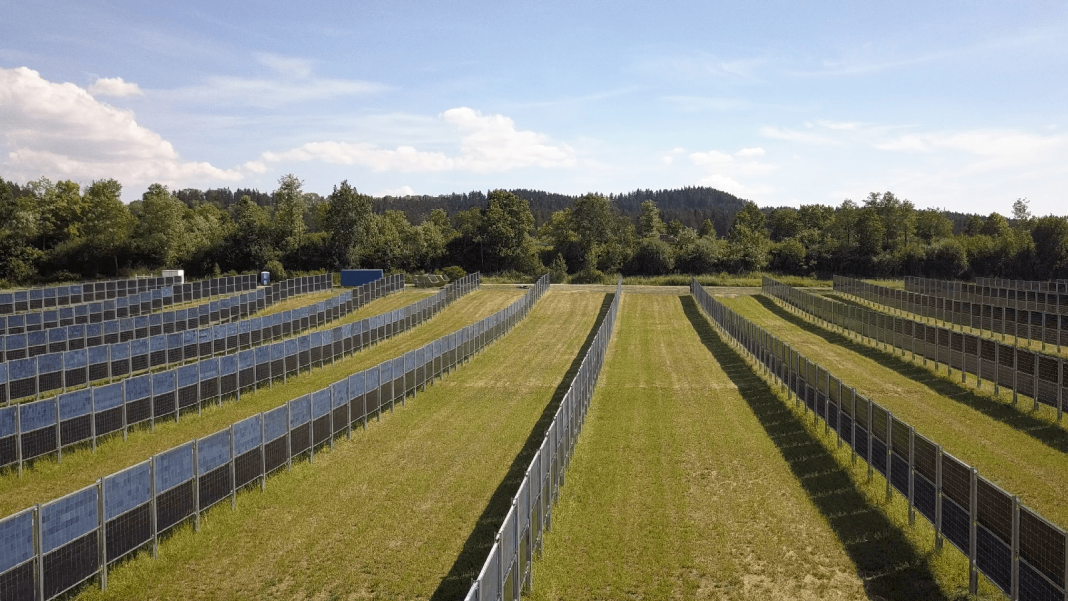Producing solar energy on a farm typically means covering a field with panels.
But now some companies make solar panels that stand vertically, so they take up less space and can be more easily integrated into pastures or croplands.
Biernath: “You still can work on the land, and it’s not just a solar farm and that’s it.”
Helge Biernath is the CEO of Sunstall, which makes vertical solar systems called Sunzaun.
At one winery in California, the Sunzaun solar systems snake in between rows of grapevines.
And Rutgers University is testing the use of Sunzaun panels in a cattle grazing field.
Biernath says the panels can double as fences, shade structures, or windbreaks.
And in addition to their use on farms, they could be installed along canals, railroads, or highways.
Biernath: “I think there’s a huge potential, especially when the sides of the freeways are open for developments.”
Biernath says vertical systems can pair well with other types of solar.
Because the sun hits them more directly at sunrise and sunset, vertical systems produce the most energy in the morning and evening, when rooftop or ground-mounted solar panels are less efficient.
So they could help get more clean energy on the grid, all while using less space.
Reporting credit: Ethan Freedman / ChavoBart Digital Media
We help millions of people understand climate change and what to do about it. Help us reach even more people like you.


